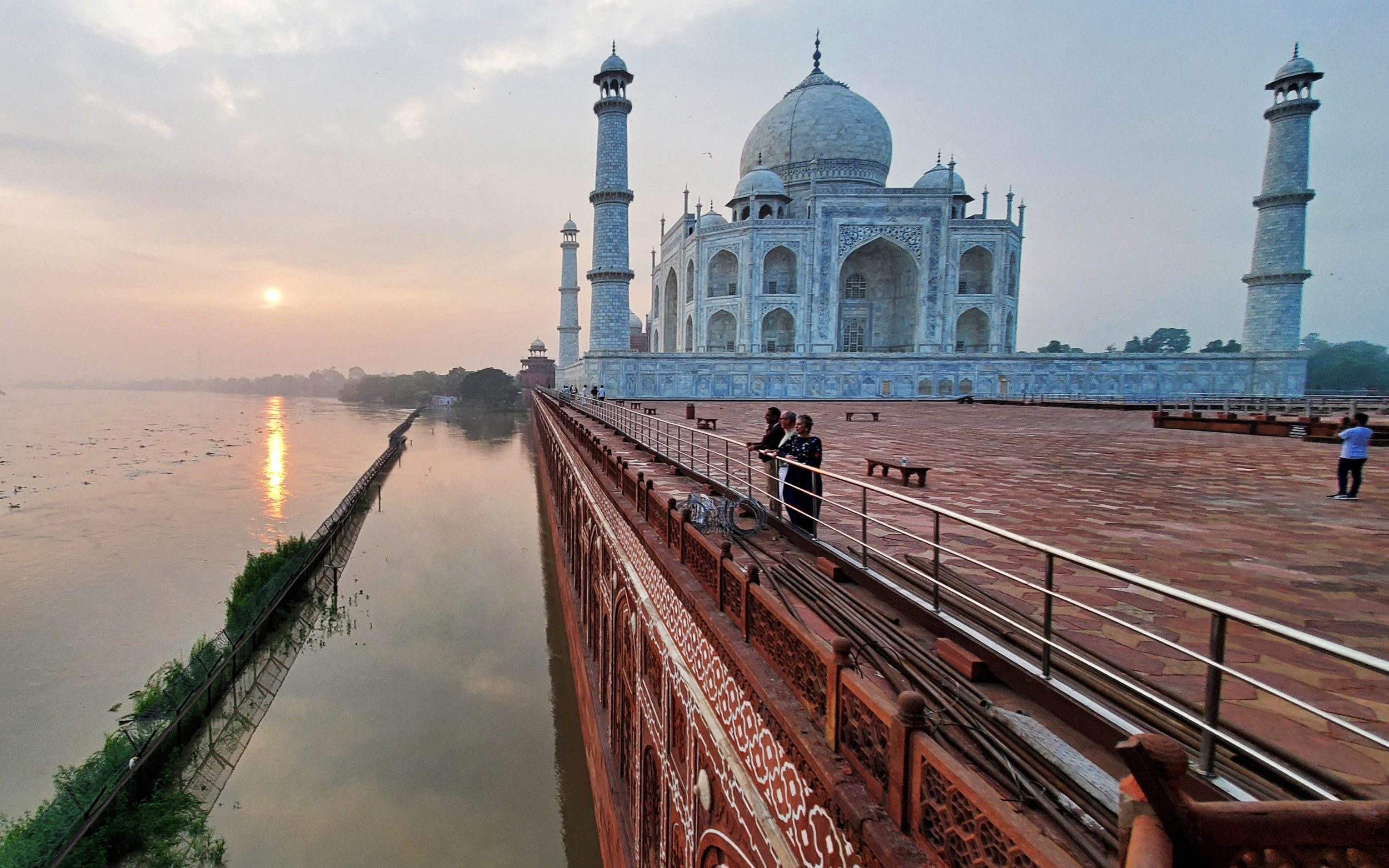The majestic Taj Mahal, a UNESCO World Heritage site renowned for its architectural splendor, is confronting an unprecedented and alarming danger as the Yamuna River’s water levels surge, touching its walls for the first time in 45 years. The unexpected rise has been prompted by heavy and continuous rainfall, leading to the swelling of the Yamuna River beyond its usual levels. Conservationists and authorities are closely monitoring the situation to safeguard this cultural treasure.
Exceeding the Yamuna River ‘Low-Flood Level’: A Critical Situation
The Yamuna River’s water level has surged to an alarming 497.9 feet, surpassing the ‘low-flood level’ threshold of 495 feet. This unexpected rise has caused the river’s waters to breach the walls of the Taj Mahal, sparking concern among conservationists and authorities regarding the potential consequences for this cherished historical masterpiece.
Areas and Monuments Impacted: Widespread Concerns
The surging waters have not only encroached upon the walls of the Taj Mahal but have also inundated the adjacent Dussehra Ghat and parts of the nearby Itimad-ud-Daula’s tomb. The safety and preservation of other historical monuments in the vicinity, including Rambagh, Mehtab Bagh, Zohra Bagh, Kala Gumbad, and Chini ka Rauza, are also under intense scrutiny.
Taj Mahal’s Ingenious Design and Resilience: A Ray of Hope
Despite the alarming situation, the Archaeological Survey of India (ASI) has provided reassurance that the Taj Mahal was meticulously designed with strategic measures to withstand flooding. Even during high floods, the main mausoleum is protected from water entry, ensuring the preservation of this architectural marvel.
Learning from Past Flood Incidents: Historical Context
Recalling the floods of 1978, when the Yamuna River last approached the back wall of the Taj Mahal, reaching a height of 508 feet (marked as the high-flood level in Agra), water had entered the monument’s basement through wooden doors, leaving behind silt. In response, the ASI took proactive actions, removing the wooden doors and constructing protective walls at the entrances from Basai and Dussehra Ghats.
Rescue Operations and Safety Measures: Prioritizing Human Lives
The rising water levels have posed severe challenges to the safety and well-being of local residents residing in low-lying areas of Agra and Mathura. Prompt rescue operations, led by the National Disaster Response Force (NDRF), police, and local administration, are underway to assist those stranded in flooded regions. Approximately 500 individuals from 50 villages and 20 urban localities near the Yamuna River have been relocated to safer zones to avoid potential risks.
Continuous Monitoring and Cautionary Measures: A Race Against Time
With the rainfall continuing in the region, authorities are maintaining a vigilant watch on the water levels of the Yamuna River. Continuous monitoring is critical to prevent any further escalation of risks to the Taj Mahal and its surroundings. Precautionary measures are being implemented with utmost urgency to ensure the safety and preservation of this magnificent historical monument, which holds immense cultural significance for India and the world.
Also Read: https://indothinker.com/pm-modi-renames-nda-new-india-developed-nation/



